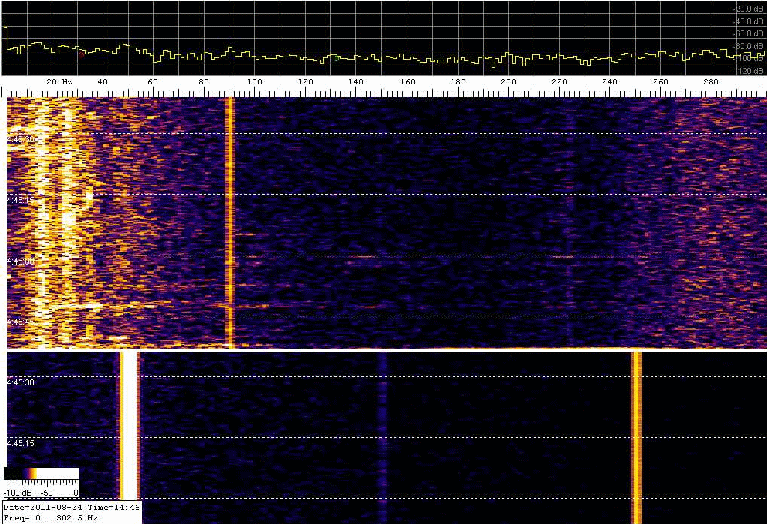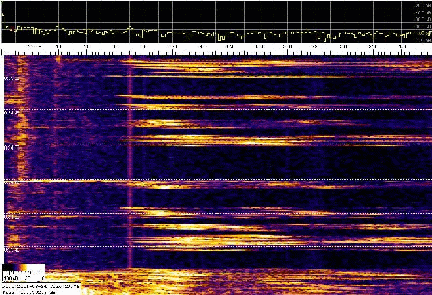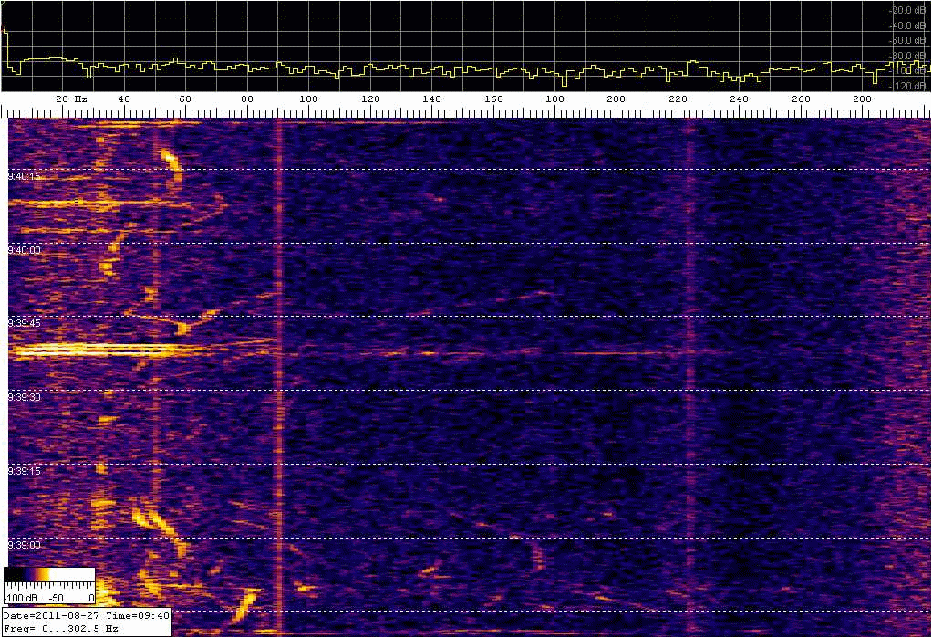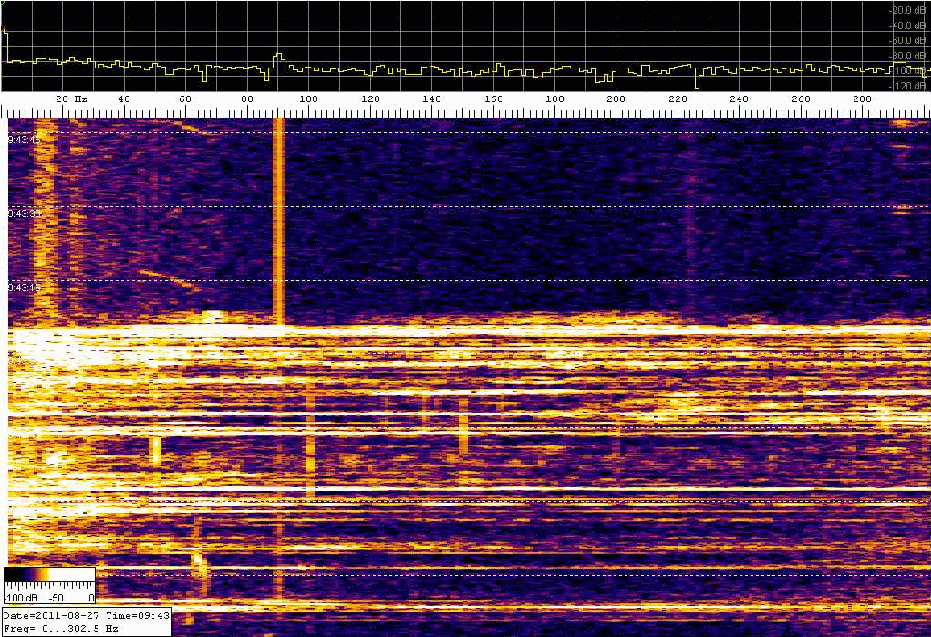
The Hum, the sound of silence – almost.
By Dr Chris Barnes, Bangor Scientific Consultants. Scienceconsultants@yahoo.co.uk
Abstract
The Hum and some of its background and potential causes are described. Some work on infrasonic and low frequency noise is cited and reviewed. Based on anecdotal reports of people hearing the Hum in anechoic chambers which are good down to about 150Hz, the question is posed is the Hum the sound of silence? Certainly for frequencies in the range 100-312 Hz it is proved this is the case. Silence here and some good strong signals and infra-sound below this frequency range are important requisites for Hum perception in the subjects tested.
Introduction
The Hum a nocturnal pulsating quasi-periodic sound is now a widely reported phenomenon in Britain. The numbers of reports have grown substantially since the 1970’s suggesting that the Hum is related to modern infrastructure. People who hear or perceive the Hum is often labelled Hummers and it would seem that in one mode of perception of the phenomenon they are more sensitive than average to low frequency noise. This does not rule out of course that there could be other modes of electromagnetic signal perception in some sensitive individuals not related to low frequency noise and these have been discussed by the present author elsewhere( refs). The Hum is sometimes described as the noise of an idling engine or throbbing sound. These are also described as the effects of infrasound (Poulsen and Mortensen Working Report 1 to Danish Environmental Protection Agency 2002). The prsent author has recently shown that in his home area the Hum can anise either as a result of power grids or gas mains behaving badly (ref).
In the original Taos Hum study, the Hum could not be recorded on traditional acoustic recording equipment. This is either because the equipment simply was not sensitive enough or because the Hum requires more than one component for its perception and is thus as much an internal as external phenomenon. Perhaps from those days the Hum has been associated with the somewhat enigmatic and almost paranormal and has been dissociated from mainstream science. This has caused huge difficulties for sufferers who have wrongly been regarded as crack –pots and indeed, for example, in Bristol in the 1970’s were given government advice to wear aluminium helmets!
However, if one looks more objectively at the Hum one can see its anecdotal descriptions tie in most closely with the known effects of infrasound and low frequency noise. The latter which Vasudevan and Gordon, Institute of Sound and Vibration Research University of Southampton describe as most annoying when it comprises a broad band spectrum whose amplitude lies close to the threshold of human hearing but skewed or unbalanced to the extent where the major stimulus lies in the frequency range 20-100 Hz and was thought by them to arise from distant industrial sources.
Below is the entire abstract of a work on low frequency sound and infrasound
Møller H, Pedersen CS. Hearing at low and infrasonic frequencies. Noise & Health. 2004 Apr-Jun; 6(23): 37-57
The human perception of sound at frequencies below 200 Hz is reviewed. Knowledge about our perception of this frequency range is important, since much of the sound we are exposed to in our everyday environment contains significant energy in this range. Sound at 20-200 Hz is called low-frequency sound, while for sound below 20 Hz the term infrasound is used. The hearing becomes gradually less sensitive for decreasing frequency, but despite the general understanding that infrasound is inaudible; humans can perceive infrasound, if the level is sufficiently high. The ear is the primary organ for sensing infrasound, but at levels somewhat above the hearing threshold it is possible to feel vibrations in various parts of the body. The threshold of hearing is standardized for frequencies down to 20 Hz, but there is a reasonably good agreement between investigations below this frequency. It is not only the sensitivity but also the perceived character of a sound that changes with decreasing frequency. Pure tones become gradually less continuous, the tonal sensation ceases around 20 Hz, and below 10 Hz it is possible to perceive the single cycles of the sound. A sensation of pressure at the eardrums also occurs. The dynamic range of the auditory system decreases with decreasing frequency. This compression can be seen in the equal-loudness-level contours, and it implies that a slight increase in level can change the perceived loudness from barely audible to loud. Combined with the natural spread in thresholds, it may have the effect that a sound, which is inaudible to some people, may be loud to others. Some investigations give evidence of persons with an extraordinary sensitivity in the low and infrasonic frequency range, but further research is needed in order to confirm and explain this phenomenon.
The extract is included to emphasise the misery of some of those afflicted by the hum
There are a number of internet forums for sufferers of the Hum and in general these are not helpful as they help perpetuate the notion that the Hum is insolvable.
Here is a typical example. ‘I can still hear the Hum in an anechoic chamber and a Faraday cage therefore it is not acoustic or electromagnetic’
Seeing such a statement immediately gets the lay reader thinking of a paranormal type of phenomenon or at least one it is not easy to understand with invoking phenomenology complex science.
By applying science it is easy to see both conclusions are wrong. An anechoic chamber is only good down to about 150 Hz. A Faraday screen only cuts out the electric field component of an electromagnetic radiation. But here we shall limit ourselves to just acoustic versions of the Hum for reading comments in forums and newspaper anecdotal reports these are by far and above the most commonly described versions.
From personal experience the present author has visited several residences and locations in North Wales affected by the Hum and he has mainly perceived the phenomenon as acoustic i.e. one that can be screened or reduced by ear plugs. However, the present author is also able to perceive certain low frequency magnetic signals and microwave signals and has an idea that those sensitised by the Hum may also become sensitised to electromagnetic frequencies which are the same or similar or which have pulsed or amplitude modulations which are the simile or similar. This notion may also work in reverse. Such notions would be interesting to test by experiment and would require the participation of significant numbers of ‘hummers’.
Experimental
So is the Hum the sound of silence or almost? A series of experiments were carried out by recording acoustic spectra in the form of frequency- amplitude time waterfalls and quantifying them in perception (author and his wife) ‘no hum’, ‘weak hum’ , ‘strong hum’. The equipment use was simple, merely an ACER Travelmate laptop computer running Spectrum Lab software an either the internal electret microphone or an external moving coil microphone comprising a base loudspeaker working in reverse.
The results
These are simply the output plots with an appropriate subjective comment attached.

Figure 1 Underneath a 400 KV power circuit – Hum perceived strongly

Figure 2 11KV underground lead in sub-station Hum Not Perceived

Figure 3 Master bedroom Hum weakly perceived

Figure 4 Downstairs toilet Hum strongly perceived.
Discussion
The frequency of 90 Hz is an artifact representing the 5,400 rpm spin speed of the laptop HDD. In figures 1 and 4 the Hum was strongly perceived even though the precise frequency make up in the range 0-70 Hz is different in each case. Common between the two is that in the frequency range 100-312 Hz ( the latter been the highest frequency recorded in the study) there is virtually no sound signal the levels are between 40-60 dB lower than in the active part of the spectrum.
In figure 3 where the Hum is weakly perceived, sound levels in the range 100-312 Hz are between 10-20 dB lower than the the active part of the range.
Finally, in figure 2 where the Hum is not perceived there are sound bursts at levels equal to and greater than those in the infrasonic and lower frequency ranges.
Conclusion
The Hum in a sense could truly be referred to as 'the sound of silence' at least for frequencies above 100 Hz and indeed silence here seems to be a pre-requisite for perception of the Hum in the two individuals of this present study. Based on this simple methods of relief might be realizable for at least some Hum sufferers.